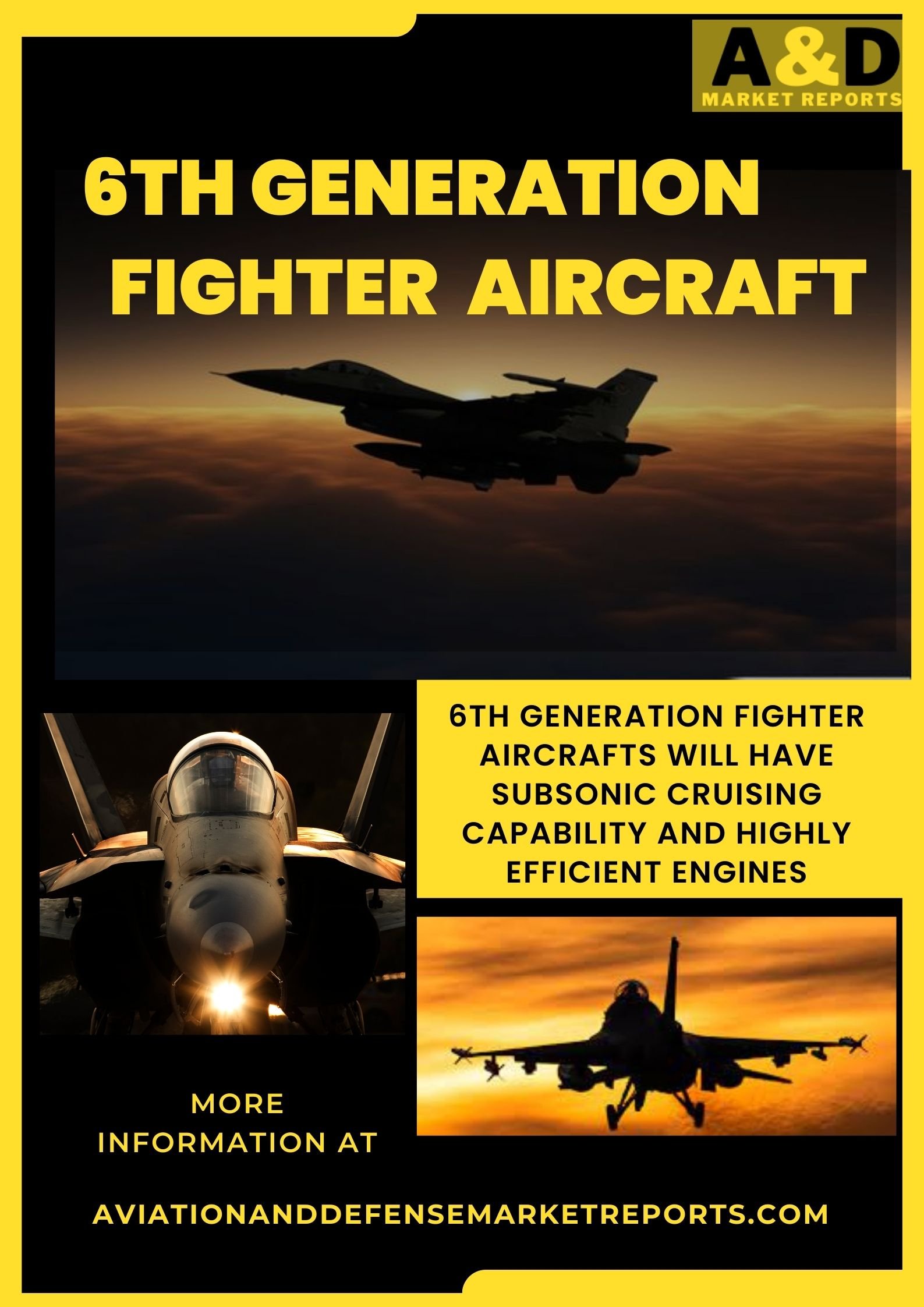Fighter planes have taken on a variety of specialized fighting tasks. Interceptors are fighters with the finest design and weaponry for intercepting, defeating, or routing invading fighters. A night fighter is a fighter aircraft equipped with advanced radar and other sensors for nighttime navigation in unknown or hostile territory. A day fighter is an aircraft that saves weight and space by omitting the night fighter’s sophisticated navigational equipment. The air supremacy, or air superiority, fighter must have long-range capability in order to search and destroy hostile fighters as per aerospace aviation and defense as well as according to A&D market experts.
FIGHTER JET
During the Second World War, the first fighter jet entered combat. The Messerschmitt ME262 had a truly revolutionary design. In truth, if this fighter had arrived sooner, it could have changed the outcome of WWII; unfortunately, the ME 262 arrived too late to challenge the Allied air force according to aerospace aviation and defense professionals. The ME 262 is credited as the first operational fighter jet, offering superior performance and armament to Allied planes. The plane was powered by two Junker Jumo 004B turbofan engines, which allowed it to reach a top speed of 560 miles per hour. Because it possessed such a significant aerial advantage, the best approach for Allied pilots was to kill the Me262 while they were still on the ground according to A&D market experts.
4TH GENERATION FIGHTER JET
Today various 4th, 4.5 and 5th generation fighter planes are in service around the world. The F-15 was designed from the start to be a pure air superiority fighter. It was built with a secondary ground-attack capability as per aerospace aviation and defense trends. The F-15E Strike Eagle, an enhanced all-weather strike variant, was later developed, entered service in 1989, and has been exported to various countries. Sukhoi Su-27 is a twin-engine supermaneuverable fighter aircraft of Soviet origin. With a range of 3,530 kilometers (1,910 miles), and sophisticated avionics. It was designed to compete directly with powerful US fourth-generation fighters like the Grumman F-14 Tomcat and McDonnell Douglas F-15 Eagle. The Su-27 was developed for air superiority duties, but later variants can undertake nearly all aerial combat roles according to A&D market experts.
4.5 GENERATION FIGHTER AIRCRAFT
The use of modern digital avionics and aerospace materials, minor signature reduction (mainly RF “stealth”), and highly integrated systems and armaments are the main characteristics of this sub-generation according to aerospace aviation and defense trends. These fighters are mostly multirole aircraft that have been built to operate in a “network-centric” fighting scenario. Beyond-visual-range (BVR) AAMs, solid-state phased-array radars, helmet-mounted sights, and more secure, jamming-resistant datalinks are among the new weapons technology. Many 4.5th generation fighters have also implemented thrust vectoring to boost transient maneuvering capabilities, and upgraded power plants have enabled some designs to achieve a degree of “supercruise” capability. The frontal-aspect radar cross section (RCS) signature-reduction approaches, such as radar-absorbent materials (RAM). Eurofighter Typhoon, Dassault Rafale, Saab JAS 39 Gripen, and HAL Tejas Mark 1A are all examples of 4.5 generation aircraft according to A&D market experts.
5TH GENERATION FIGHTER AIRCRAFT
5th generation fighter planes such as F-22, F-35 and J-20 aircrafts have a significantly lower radar cross section when compared to 4.5 generation aircrafts. The Lockheed Martin/Boeing F-22 Raptor ushered in the fifth generation in late 2005. The F-35 is intended to be a family of three aircraft: a conventional take-off and landing (CTOL) fighter, a short take-off and vertical landing (STOVL) fighter, and a Catapult Assisted Take Off But Arrested Recovery (CATOBAR) fighter. Other countries, including Russia, have begun development projects for fifth-generation fighters, such as the Sukhoi Su-57 as per aerospace aviation and defense experts. It was discovered in December 2010 that China is working on the Chengdu J-20, a fifth-generation fighter. The J-20 flew for the first time in January 2011. The Shenyang J-31 flew for the first time on October 31, 2012. Japan is investigating the technical possibility of developing fifth-generation warplanes. India is working on the Advanced Medium Combat Aircraft (AMCA), a medium-weight stealth fighter jet that is expected to begin serial production in the late 2030s according to A&D market experts.
SIXTH GENERATION FIGHTER JETS
By 2035, France and Germany will collaborate on the development of a sixth generation fighter jets to replace their present fleet of Dassault Rafales, Eurofighter Typhoons, and Panavia Tornados. Dassault and Airbus will lead the overall development, while Safran and MTU Aero Engines will reportedly work together to build sixth generation fighter jets’ engines. Thales and MBDA are also interested in participating with the project. Spain is apparently preparing to join the programme later in the process, with a letter of intent scheduled to be signed in early 2019. The first sixth generation fighter jets is expected to enter service in the US Navy in the 2025–30 period, and is currently in the concept stage. The US Air Force is looking for a new fighter for the 2030–50 period called the “Next Generation Tactical Aircraft” (“TACAIR”). Beginning in 2025, the US Navy plans to replace its F/A-18E/F Super Hornets with Next Generation Air Dominance air superiority fighters. Team Tempest, a European consortium consisting of BAE Systems, Rolls-Royce, Leonardo S.p.A., and MBDA, is developing the UK’s projected stealth fighter planes. The plane is set to go into service in 2035. While present engines perform best at a single point in the flight envelope, sixth generation fighter jets’ engines are planned to have a variable cycle, allowing for more range, faster acceleration, and better subsonic cruising economy at any speed or altitude. The engine would be configured to behave like a turbojet at supersonic speeds while acting like a high-bypass turbofan for economical cruising at slower speeds; fighters planes using this engine type will most likely be able to super cruise.
See More:- Indian Air force Modernization, Defense Systems, Aerospace 3D Printing Market

1 Comment
See the comment